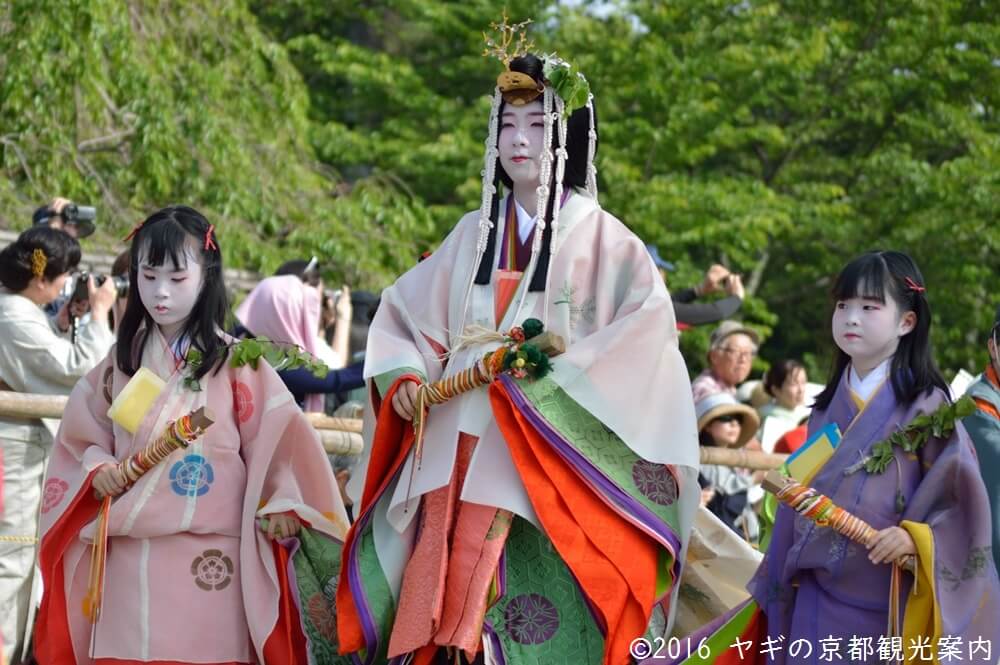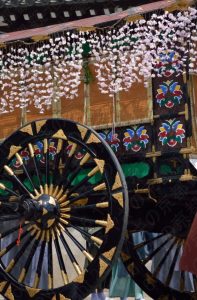THE GIST OF THIS ARTICLE
- Page 1 Schedule, What is Aoi Matsuri?
- Page 2 Saioh Dai 斎王代
- Page 3 Parade1: Chokushidai Retsu 勅使代行列
- Page 4 Parade2: Saiohdai Retsu 斎王代列
- Page 5 Shato no Gi 社頭の儀
- Page 6 Ceremonies prior to Aoi Matsuri
- Page 7 How to see the parade?
The following is the contents of this article.
Saiou-dai in Aoi matsuri festival
Saioh dai is a most famous figure in Aoi matsuri festival (The lady in the picture above.). The word “dai” means a substitute for someone/something in Japanese.
Saioh is a Shinto priestess works as a deputy of the emperor.
In the Heian period, when the new emperor enthroned, a fortune-teller chose Saioh among unmarried ladies in the imperial family on a special fortune-telling.
In Japanese history, emperors sent Saiohs “斎王”to Ise shrine and Kamosha (Kamigamo and Shimogamo shrine) Saiho for Ise shrine is “斎宮” and for Kamosha is “斎院.” Today, they read “Sai Ku” and “Sai In” individually but both of them are pronounced “Itsukino Himemiko (イツキノヒメミコ).”
The history of Sai Ku dates back to at least 8th century. And that of Sai In for Kamosha started in 810. On the year, a conflict between emperor Saga and retired emperor Heizei. Emperor Saga requested his victory to the deities of Kamosha and promised he would send a priest to the deity. After the conflict was settled, he sent his daughter to Kamo sha as a priestess on behalf of him.
Once a lady was elected as Saioh, she moved to a small palace called “Hatsu sai in” to purify herself for three years. After the purification of three years, she moved to a small palace temporary built for Saioh called “Nomiya” and purified herself at the river Kamo. After these purification, she was in a state to serve as a deputy of the emperor.

If you were interested in Japanese culture or literature, you might know The Tale of Genji written by Murasaki Shikibu. In the chapter ‘Aoi’, you can find a incident called “Kuruma arasoi”. That is a small conflict took place at Aoi matsuri festival.
Saioh became extinct in Kamakura period (1185–1333) and was restored as “Saiou-dai” We call her “Saioh-dai” i.e. the substitute for Saioh because she was not erected among the members of the royal family nor is Shinto priestess.
ヤギの京都観光案内/KYOTO GOAT BLOGをもっと見る
購読すると最新の投稿がメールで送信されます。




